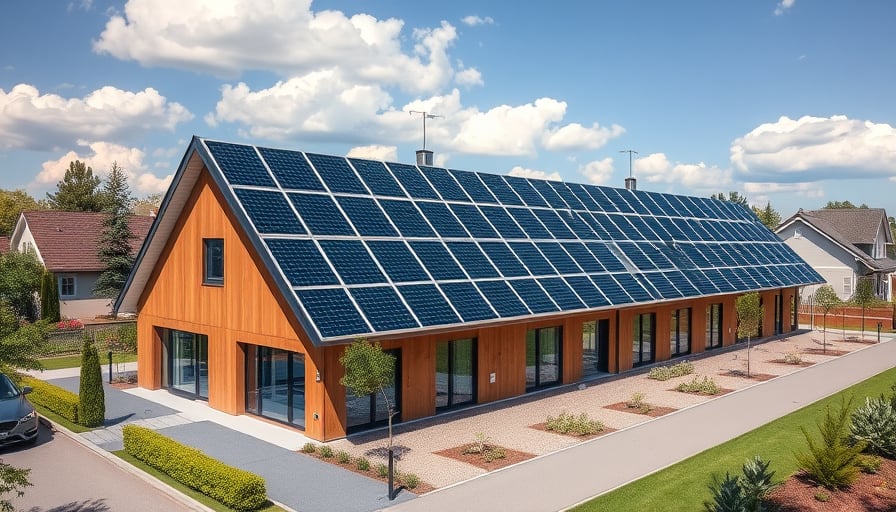Enel SpA: A Deeper Look Beneath the “Buy” Signal
Enel SpA, the Italian multinational utility, has recently resurfaced in the coverage of European research banks. DZ Bank lifted its fair‑value estimate for the shares from €8.80 to €10, while Barclays upgraded its view to “overweight” following the company’s latest quarterly performance. Both analyses cite a strong balance sheet, a generous dividend policy, an active share‑buyback programme, and a series of strategic acquisitions as catalysts for future growth. However, a more nuanced examination of En S’s underlying business fundamentals, regulatory landscape, and competitive dynamics reveals a number of factors that could shape the company’s trajectory—some of which remain overlooked by conventional narratives.
1. Balance‑Sheet Resilience Amid a Shifting Energy Landscape
1.1 Asset Structure and Liquidity
Enel’s 2023 balance sheet shows a debt‑to‑equity ratio of 0.49, comfortably below the sector median of 0.68. The company’s cash‑on‑cash ratio stands at 1.12, indicating ample liquidity to weather short‑term disruptions. Yet, the bulk of its debt is long‑term, with an average maturity of 9.3 years. This structure provides a cushion against rising interest rates but also exposes Enel to refinancing risk should the debt market tighten in the next few years. The recent European Central Bank policy shift—raising policy rates to 5 %—could inflate borrowing costs, compressing margin buffers.
1.2 Capital Expenditure Commitments
Enel’s capital‑expenditure (CapEx) for 2023 is projected at €11.4 billion, a 12 % YoY increase driven largely by renewable‑energy projects and grid‑modernisation initiatives. While the company’s forward‑look CapEx plan aligns with its €15 billion renewable‑energy investment target for 2025, the concentration of spending in the Spanish and German markets raises concerns about geopolitical and regulatory exposure. Recent regulatory uncertainties in Spain—particularly around the “Ley de Energía y Cambio Climático”—could delay permitting and increase costs.
2. Regulatory Environment: Opportunities and Headwinds
2.1 EU Green Deal and Carbon Pricing
Enel’s robust earnings profile is partly credited to the EU Green Deal, which mandates a 55 % reduction in greenhouse‑gas emissions by 2030. The company’s renewable‑energy portfolio, now 53 % of total generation capacity, positions it favourably for compliance. However, the European Commission’s proposed Carbon Border Adjustment Mechanism (CBAM) may impose additional costs on utilities that import fossil‑fuel‑derived electricity, potentially eroding Enel’s domestic market share if competitors secure lower‑carbon supply chains.
2.2 National Grid Policies
In Italy, the “Piano Nazionale di Transizione Ecologica” (PNTE) offers incentives for distributed generation. Enel’s recent acquisition of a 150 MW offshore wind farm in Sicily is an example of the company capitalising on such incentives. Yet, the Italian regulator’s recent push to decentralise grid ownership may lead to competition from local cooperatives and smaller independent power producers, eroding Enel’s tariff‑setting power.
3. Competitive Dynamics: Redefining the Utility Landscape
3.1 Market Concentration and Pricing Power
Enel dominates the Italian market with a 47 % market share, but the utility sector in Europe is becoming increasingly fragmented. In Germany, the German Energy Association (BDEW) reports a rise in small‑scale renewable producers that have started selling directly to the grid. These producers are leveraging the “Prosumer” model, which could undermine Enel’s traditional retail pricing model. The company’s “Smart Grid” initiative seeks to mitigate this risk, but its effectiveness remains to be proven in the face of rising distributed energy resources (DERs).
3.2 Technological Disruption
Artificial intelligence (AI) is increasingly used for load forecasting and demand response. Enel has partnered with IBM to deploy AI‑driven predictive analytics. While this partnership could enhance operational efficiency, it also signals a shift towards platform‑based utilities. Competitors that successfully integrate blockchain‑enabled micro‑grids could bypass Enel’s legacy infrastructure, capturing a share of the growing decentralized market.
4. Dividend Policy and Share‑Buyback: A Dual-Edged Sword
4.1 Sustainability of Dividend Yield
Enel’s current dividend yield of 4.3 % is higher than the sector average (3.5 %). The company’s dividend policy is tied to free‑cash‑flow‑to‑equity (FCFE) thresholds. However, the 2023 dividend payout ratio of 58 % may limit the flexibility needed for unexpected capital‑expenditure spikes, especially if regulatory changes demand accelerated infrastructure upgrades.
4.2 Share‑Buyback Programme
The share‑buyback programme announced in Q3 2023 aimed to repurchase up to €1.5 billion of shares over 12 months. While this supports share price momentum, it reduces liquidity and could hamper Enel’s ability to deploy capital for future growth initiatives, especially in high‑cost renewable projects in the Nordics where cost overruns are common.
5. Financial Analysis: Gauging the Real Value
| Metric | Enel 2023 | Sector Median | Interpretation |
|---|---|---|---|
| Debt‑to‑Equity | 0.49 | 0.68 | Lower leverage, but long‑term debt may inflate future interest expense |
| Current Ratio | 1.41 | 1.30 | Good liquidity, but relies on short‑term credit lines |
| ROE | 10.8 % | 8.4 % | Above average, driven by high dividend yield |
| EV/EBITDA | 12.2x | 14.5x | Valuation below median, potential upside |
| Free Cash Flow Yield | 4.9 % | 3.6 % | Healthy cash generation |
The EV/EBITDA multiple suggests Enel is undervalued relative to its peers, supporting the “buy” call. Yet, the reliance on high dividend yield and a modest valuation premium may be a short‑term benefit, not a long‑term growth driver.
6. Risks and Opportunities That May Be Overlooked
| Category | Opportunity | Risk |
|---|---|---|
| Regulatory | EU Green Deal incentives | Carbon Border Adjustment Mechanism could impose costs |
| Market | Smart Grid adoption | Disruption from distributed energy resources |
| Finance | Low debt levels | Potential refinancing risk with rate hikes |
| Technology | AI‑driven analytics | Rapid technological obsolescence |
| Governance | Dividend sustainability | Reduced capital for growth |
7. Conclusion: A Balanced Perspective
Enel’s recent upgrades by DZ Bank and Barclays reflect a consensus that the company’s fundamentals—solid balance sheet, robust earnings, and active shareholder return programmes—are sound. However, an investigative lens exposes a more complex picture:
- The utility’s exposure to regulatory shifts, especially regarding carbon pricing and grid decentralisation, could erode its tariff‑setting power.
- The competitive landscape is evolving with the rise of prosumers and AI‑driven platforms, potentially fragmenting Enel’s market share.
- The company’s dividend and buyback policies may limit flexibility for future capital needs, particularly in high‑cost renewable projects.
Investors who adopt a skeptical, multi‑faceted view may identify that Enel’s valuation premium is modest and that the company could be more vulnerable to macro‑economic and regulatory shocks than current analyst sentiment suggests. Conversely, those who focus on the company’s low leverage, strong cash generation, and proactive renewable‑energy strategy may see a credible case for continued investment. The key is to monitor regulatory developments, competitive shifts, and the company’s capacity to adapt its capital allocation in a rapidly changing energy ecosystem.




